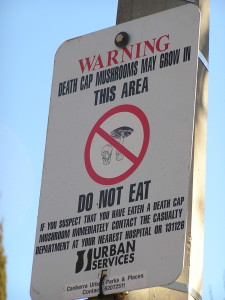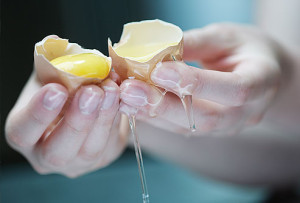In a report that is sure to be interpreted by the political lenses of various groups, the U.S. Centers for Disease Control and Prevention reports that in 2012 that multi-drug resistant Salmonella decreased during the past 10 years and resistance to two important groups of drugs – cephalosporins and fluoroquinolones – remained low in 2012. However, in Salmonella typhi, the germ that causes typhoid fever, resistance to quinolone drugs increased to 68 percent in 2012, raising concerns that one of the common treatments for typhoid fever may not work in many cases.
 About 1 in 5 Salmonella Heidelberg infections was resistant to ceftriaxone, a cephalapsorin drug. This is the same Salmonella serotype that has been linked to recent outbreaks associated with poultry. Ceftriaxone resistance is a problem because it makes severe Salmonella infections harder to treat, especially in children.
About 1 in 5 Salmonella Heidelberg infections was resistant to ceftriaxone, a cephalapsorin drug. This is the same Salmonella serotype that has been linked to recent outbreaks associated with poultry. Ceftriaxone resistance is a problem because it makes severe Salmonella infections harder to treat, especially in children.
The data are part of the latest report of the National Antimicrobial Resistance Monitoring System (NARMS), a tri-agency surveillance system that has tracked antibiotic resistance in humans (CDC), retail meats (Food and Drug Administration), and food animals (U.S. Department of Agriculture) since 1996. The report from CDC NARMS compares resistance levels in human samples in 2012 to a baseline period of 2003-2007.
“Our latest data show some progress in reducing resistance among some germs that make people sick but unfortunately we’re also seeing greater resistance in some pathogens, like certain types of Salmonella,” said Robert Tauxe, M.D., M.P.H, deputy director of CDC’s Division of Foodborne, Waterborne, and Environmental Diseases. “Infections with antibiotic-resistant germs are often more severe. These data will help doctors prescribe treatments that work and to help CDC and our public health partners identify and stop outbreaks caused by resistant germs faster and protect people’s health.”
Among the other findings in the 2012 report:
*Campylobacter resistance to ciprofloxacin remained at 25 percent, despite FDA’s 2005 withdrawal of its approval for the use of enrofloxacin in poultry. Ciprofloxacin and enrofloxacin are both in the fluoroquinolone class of drugs.
*Shigella resistance to ciprofloxacin (2 percent) and azithromycin (4 percent) is growing. However, no Shigella strains were resistant to both drugs.
*Although fluoroquinolone resistance remained low in 2012, Salmonella enteritidis – the most common Salmonella type – accounted for 50 percent of infections resistant to the fluoroquinolone drug nalidixic acid, which is used in laboratory testing for resistance. Resistance to nalidixic acid relates to decreased susceptibility to ciprofloxacin, a widely used fluoroquinolone drug. Other work shows that many of the nalidixic acid resistant Salmonella enteritidis infections are acquired during travel abroad.
The full 2012 NARMS report is available on the CDC website at www.cdc.gov/narms/reports/annual-human-isolates-report-2012.html. For more information about NARMS, visit www.cdc.gov/narms.
In Australia, researchers from the Australian National University’s Research School of Biology tested more than 90 packages of chicken bought from several Canberra retailers for the presence of E. coli.
 Professor of microbial population biology and evolution, David Gordon, said almost 200 samples were found to contain E. coli and of those, about two-thirds were discovered to be antibiotic-resistant.
Professor of microbial population biology and evolution, David Gordon, said almost 200 samples were found to contain E. coli and of those, about two-thirds were discovered to be antibiotic-resistant.
Just four strains of E. coli were found to be resistant to antibiotics known as fluoroquinolone, which were not used by Australia’s poultry industry, he said.
Professor Gordon said the E. coli strains researchers found were rare in the samples.
He said it was unlikely the strains of fluoroquinolone-resistent E. coli were in the chicken before slaughtering, and the “most logical, although not necessarily true, explanation for their presence in poultry is post-processing contamination.”
An ACT Health spokeswoman said although the directorate had not seen the study, the presence of resistant bacteria in chicken meat highlighted the importance of good food handling and preparation when eating chicken, including thorough cooking and cleaning of food-preparation surfaces.
“This is important to prevent bacterial food-borne illness regardless of whether bacteria are resistant to an antibiotic,” she said.
An Australian Pesticides and Veterinary Medicines Authority spokeswoman said the authority was responsible for the assessment and registration of veterinary medicines, including antibiotics, in Australia.
She said fluoroquinolones have never been registered for use in food-producing animals in Australia.
“State and territory governments are responsible for controlling the use of pesticides and veterinary medicines beyond the point of retail sale,” she said.
 Many diners who ate at the newly-opened all-you-can-eat Brazilian barbecue were left with salmonella poisoning, and the Canberra Hospital’s emergency department reportedly had one of its busiest days on record.
Many diners who ate at the newly-opened all-you-can-eat Brazilian barbecue were left with salmonella poisoning, and the Canberra Hospital’s emergency department reportedly had one of its busiest days on record.












